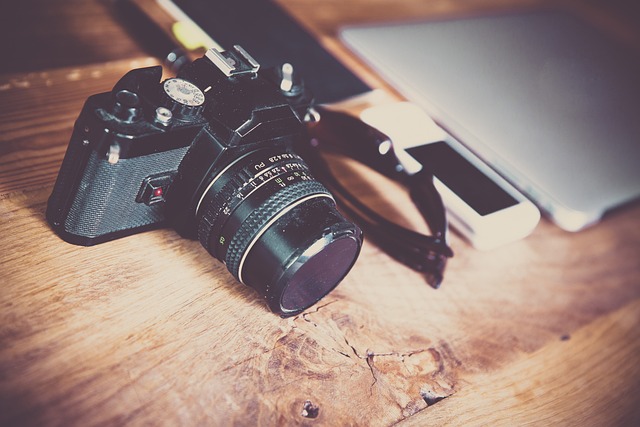
1. Canon EOS 90D
The Canon EOS 90D is one of the latest mid-range DSLRs from Canon, released with an impressive set of features for both photographers and videographers. This camera boasts a 32.5-megapixel APS-C sensor, making it one of the highest-resolution sensors in its class.
Key Features:
- 32.5 MP APS-C Sensor: The higher resolution allows for more detail in images and the ability to crop without losing too much quality.
- 45-Point Autofocus System: All points are cross-type, providing fast and accurate focusing, especially when shooting moving subjects.
- 4K Video Recording: The camera can shoot uncropped 4K at 30fps, making it ideal for videographers.
- 10fps Continuous Shooting: Great for sports and action photography, enabling you to capture fast-moving subjects.
- DIGIC 8 Processor: This ensures speedy image processing and better noise reduction, even in low light.
Pros:
- High-resolution sensor
- Uncropped 4K video
- Fast autofocus system
- Great battery life (up to 1300 shots)
Cons:
- No in-body image stabilization
- Limited dynamic range compared to full-frame cameras
Ideal For:
The Canon EOS 90D is perfect for photographers who need high resolution and versatility. It’s especially suitable for wildlife, sports, and video production enthusiasts due to its excellent autofocus system and fast shooting speeds.
2. Nikon D780
The Nikon D780 is a versatile full-frame DSLR, combining many of the best features from both DSLRs and mirrorless cameras. Released as a successor to the Nikon D750, this model is known for its 24.5-megapixel full-frame sensor and its hybrid autofocus system.
Key Features:
- 24.5 MP Full-Frame Sensor: This provides excellent image quality with great low-light performance, thanks to its back-illuminated design.
- 51-Point AF System: Offers fast and precise focusing, with 15 cross-type points ensuring accuracy in all conditions.
- Hybrid AF for Live View: The D780 uses a 273-point phase-detection autofocus system in live view mode, borrowing technology from Nikon’s mirrorless Z6 model.
- 4K UHD Video: The camera can shoot full-frame 4K without a crop, offering high-quality video options for videographers.
- 7fps Continuous Shooting: Combined with a buffer that supports over 100 shots in JPEG, it is great for action and sports photography.
Pros:
- Excellent image quality in both photo and video
- Hybrid AF system for accurate focusing in both live view and the viewfinder
- Great build quality with weather sealing
- Impressive battery life
Cons:
- No built-in flash
- Higher price compared to other DSLRs in its class
Ideal For:
The Nikon D780 is an excellent choice for photographers looking for a full-frame DSLR with high-quality video capabilities. Its hybrid autofocus system makes it particularly useful for those who switch between stills and video often, such as wedding and event photographers.
3. Canon EOS Rebel T8i (EOS 850D)
Canon’s Rebel T8i, known as the EOS 850D outside the U.S., is a fantastic entry-level DSLR camera that is packed with features designed to make photography accessible to beginners. With a 24.1-megapixel APS-C sensor, this camera provides excellent image quality at an affordable price point.
Key Features:
- 24.1 MP APS-C Sensor: This provides a good balance between image resolution and file size, suitable for beginners and hobbyists.
- 45-Point All-Cross-Type AF System: Ensures fast and accurate focusing, especially when using the optical viewfinder.
- 4K Video Recording: Although it crops the 4K footage, it still provides a decent video output for entry-level videographers.
- Vari-Angle Touchscreen: The fully articulating screen is useful for vlogging and creative angles.
- DIGIC 8 Processor: Helps to deliver quick performance, good image quality, and better noise reduction.
Pros:
- Easy to use and affordable
- Good image quality for the price
- Lightweight and compact design
- 4K video support
Cons:
- Cropped 4K video
- Limited dynamic range compared to more expensive models
Ideal For:
The Rebel T8i is aimed at beginner photographers and those transitioning from smartphone photography to a more advanced system. It’s a great option for hobbyists and vloggers looking for a lightweight, versatile camera.
4. Nikon D3500
For those looking for a more affordable entry-level DSLR, the Nikon D3500 is an excellent choice. It’s designed for beginners and offers a very intuitive interface while maintaining high image quality with a 24.2-megapixel APS-C sensor.
Key Features:
- 24.2 MP APS-C Sensor: The image quality is exceptional for an entry-level DSLR, with vibrant colors and good detail.
- 11-Point Autofocus System: While not as advanced as other models, it’s adequate for most entry-level photography needs.
- Guide Mode: Designed for beginners, this mode helps users learn the basics of photography by walking them through various shooting scenarios.
- Full HD Video: Though it doesn’t offer 4K video, the D3500 shoots in 1080p at 60fps, which is sufficient for most amateur videographers.
- 5fps Continuous Shooting: Ideal for casual photography and learning how to capture action shots.
Pros:
- Very affordable
- Excellent battery life (up to 1550 shots)
- Lightweight and compact
- Easy-to-use interface with Guide Mode
Cons:
- No 4K video support
- Limited autofocus points
- Lacks advanced features like a touchscreen or built-in Wi-Fi
Ideal For:
The Nikon D3500 is perfect for those just starting in photography or looking for a reliable backup camera. It’s also great for travelers and casual shooters who want a lightweight camera with impressive battery life and image quality at a low cost.
5. Pentax K-1 Mark II
While Canon and Nikon dominate the DSLR market, Pentax offers a unique alternative with the K-1 Mark II, a full-frame DSLR with some distinctive features. The 36.4-megapixel sensor is one of the camera’s standout features, along with Pixel Shift Resolution for ultra-high detail.
Key Features:
- 36.4 MP Full-Frame Sensor: This delivers outstanding image resolution, making it ideal for landscape and studio photography.
- Pixel Shift Resolution System II: This system shifts the sensor during exposure to capture more detail and color information, reducing noise and increasing sharpness.
- 5-Axis In-Body Stabilization: Unlike most DSLRs, the K-1 Mark II has built-in stabilization, which is useful for both photos and videos.
- Weather-Sealed Body: The robust and weatherproof build makes it perfect for outdoor and adventure photographers.
- ISO 819,200: The high ISO range ensures good low-light performance, although noise can be an issue at the higher settings.
Pros:
- Excellent image quality and detail
- In-body stabilization
- Durable, weather-sealed construction
- Unique features like Pixel Shift
Cons:
- Slower autofocus compared to competitors
- Heavier and bulkier than other DSLRs
- Lower video capabilities (1080p maximum)
Ideal For:
The Pentax K-1 Mark II is best suited for photographers who prioritize image quality and landscape or studio photography. Its rugged design makes it a good choice for those who shoot in challenging weather conditions, though it’s less ideal for fast-moving subjects due to its slower autofocus.




